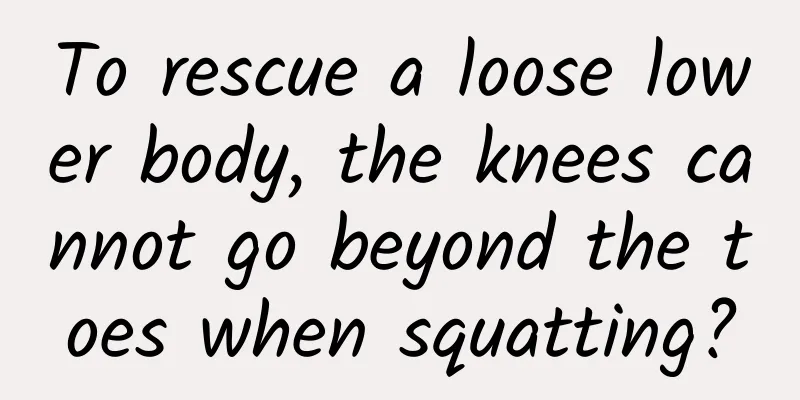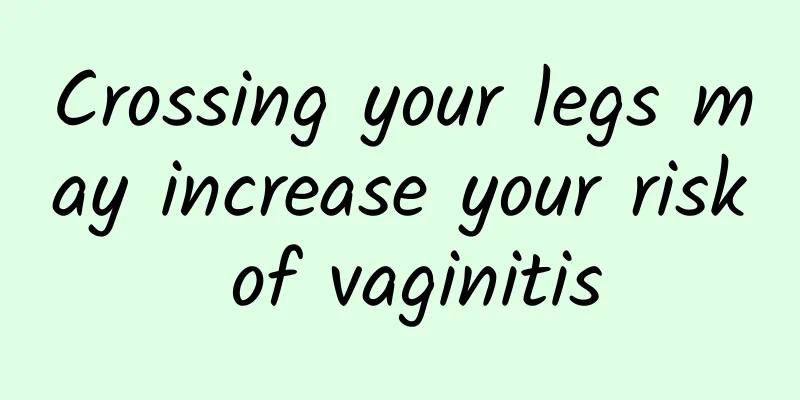To rescue a loose lower body, the knees cannot go beyond the toes when squatting?

|
Many office workers who have no exercise habits, sitting for long periods of time not only make their hips and legs fatter, but may even have problems with loose and sagging buttocks. Are you worried about your sagging buttocks and afraid to wear a bikini? Do you want to make your buttocks more perky and your thighs tighter this summer? You can do it with just one move: the "Squat"! However, how should you do squats to avoid getting injured? Can your knees go beyond your toes when squatting? Let the fitness instructor answer. "Squat" is not only the favorite of Jennifer Lopez, the "world's most beautiful butt", but even South Korea's queen of beautiful legs, Lee Hye-young, relies on squats to develop sexy thigh curves. Fitness instructor Chen Yanru said that squat training can indeed strengthen the lower limb muscles of the gluteus maximus, quadriceps, and biceps femoris, making the muscles tighter. It can also lift the lines of the buttocks and legs, giving you tight, perky buttocks and perfect leg curves. When squatting, your knees cannot go beyond your toes? Coach: Depends on individual circumstances The squat movement seems simple, but if the posture is incorrect, it may also cause sports injuries. In the past, it was generally believed that the knees should not exceed the toes when squatting. Once the knees exceed the toes, the knees will lean forward excessively, causing the center of gravity to move forward. In addition, the hip muscles do not support the body at this time, which can easily cause excessive pressure on the knee joints and cause knee injuries. However, many people have observed that if you force your knees not to go beyond your toes when squatting, you are more likely to get injured. Fitness instructor Chen Yanru pointed out that since everyone's hip joint mobility and calf bone length are different, if one is too determined to keep the knees from exceeding the toes, not only will the body be unable to maintain balance and the center of gravity may become unstable and fall, but the wrong point of force may also cause injuries to the hip joint and lower back. It is recommended that squats be adjusted according to each person's hip and ankle mobility. When squatting, push the hips back naturally as if you are sitting down. If your calves are short, your knees will easily extend beyond your toes when squatting. You don't have to force it. Your knees can extend slightly beyond your toes, but not "excessively" beyond your toes to avoid sports injuries. The following is a demonstration of the correct squat movement by fitness instructor Chen Yanru. ★【Traditional Squat】 Preparation: With your feet firmly planted, stabilize your core and retract your shoulder blades. This movement is driven by the thighs and buttocks. Breakdown of the action: 1. Stand with your feet shoulder-width apart, keep your knees in the same direction as your toes, pull your shoulder blades back and down, keep your chest up, and keep your pelvis in a neutral position. 2. After taking a deep breath, squat down until your thighs are approximately parallel to the ground. 3. Keep your core tight when returning to the original position, and push upward from the back of your legs and buttocks. 4. Each set of training can be performed for about 15 times as a cycle, and 4 to 5 sets can be performed. The intensity or weight can be adjusted according to personal physical condition. Note the principles: 1. When squatting, take a deep breath and feel your core tightening. When returning to the original position, exhale without holding your breath to avoid the "Valsalva's maneuver": not paying attention to your breathing rate during exercise, often holding your breath and exerting force, which can cause dizziness and short-term headaches during or after exercise. 2. During training, keep the spine on the center line of the body, do not arch or concave the back to avoid excessive pressure on the back. 3. When squatting, do not move the knee joint too far forward to avoid excessive pressure on the knee joint. 【Coach’s Tips】: People are reminded that if they want to advance to weighted squat training, they must first make sure that their core muscles are stable and strong enough and that their hip and ankle joints are flexible enough. If you have injuries to your shoulders, back, or hips, it is recommended that you do not do squats for the time being. In addition, if you experience lower back pain when squatting, you should stop training immediately, find out the cause of the lower back pain, and then evaluate whether you can do squats after the pain improves. Squats are a more advanced exercise, and it is generally recommended to train under the guidance of a coach for safety. 【Filming location/Provided by Abs Fitness Club】 |
<<: 3 tips to avoid obesity! Doctor: Stay away from abdominal obesity first
>>: Fried food is so tempting! This trick is to eat less oil and salt and eat healthily
Recommend
Can I still get pregnant after menopause?
Can you still get pregnant after menopause? This ...
Can the right ovarian cyst be cured after 4 years? What should we pay attention to in life?
Can right ovarian cysts be cured within 4 years? ...
Can I drink milk when I have dysmenorrhea? It can relieve pain
When women have dysmenorrhea, they cannot bear th...
How to Prevent Pelvic Peritonitis
Many people are not aware of the prevention metho...
Why do you get vaginal candidal infection?
Why do you get candidal vaginitis? There are diff...
What are the symptoms of endometrial tuberculosis infection?
The uterus is the most important organ of a woman...
How to check uterine fluid in women
The harm caused by uterine effusion is very serio...
Why is menstrual blood black?
Why is menstrual blood black? If menstrual blood ...
What lifestyle habits lead to uterine fibroids?
Uterine fibroids are a common gynecological disea...
Experts explain what adnexitis is
Adnexitis is very common in our country, and we s...
What are the diagnostic criteria for uterine fibroids?
Uterine fibroids are a common gynecological disea...
Symptoms of vulvar itching
When it comes to vulvar itching, every female fri...
The care of vulvar leukoplakia should pay attention to keeping the affected area dry
With the continuous improvement of medical level,...
The leucorrhea of patients with cervicitis is generally purulent
The leucorrhea of patients with cervicitis is g...
Will cervical precancerous lesions be life-threatening if left untreated?
Cervical precancerous lesions are one of the dise...









